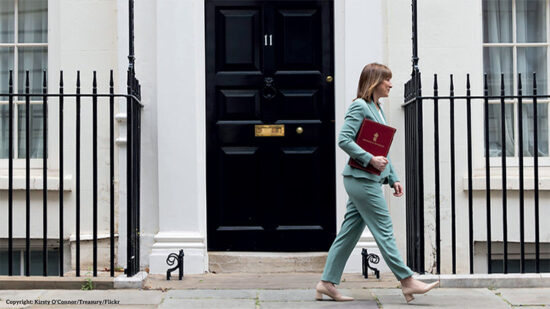Sterling
The UK looks the best of a bad bunch in Europe, and continues to gain strength on a flagging euro and anaemic US dollar. The economic releases continue to point to slow but sure growth and given this, it’s unlikely that the Bank of England will look to extend their asset purchase programme when they meet this week.
It is hard to square the UK PMI releases with the recent announcement of a fall back into recession in the first quarter. It looks like things have picked up during April across the whole economy and as such we feel that sterling will continue to hold its own. However, at current levels against the euro, it’s probably trading at the upper end of the range, and while a test of 1.2392 is possible this week, we feel it will struggle thereafter. Against the US dollar it may be a different story. We feel there is room for a further test of last week’s high around $1.6300, and possibly a move to $1.6425 before the move tops out.
US Dollar
The dollar started last week on the back foot but picked up by mid-week on a combination of strong US data and poor euro zone manufacturing numbers. On balance the US economy is moving forward at a slow but steady pace, not enough to inspire a concerted US Dollar rally, but enough to hold its own against other major currencies.
The figures, while eagerly awaited, had minimal impact on the currencies, and the US dollar continues to range trade against in major counterparties. We expect the dollar to continue to firm against the euro, mainly due to the poor shape of Euroland, but remain steady versus sterling in the week ahead. Resistance at $1.6425 remains the upside target with support at $1.6065/80 and $1.5985.
Euro
The euro started last week in good form, nearing $1.3300 against the US dollar and touching €1.2200 against sterling, but poor Euro-wide economic data on Wednesday pushed it sharply low. The problems in Europe are getting no easier, and it seems both economic and political issues are conspiring to work against the currency. We see no end in sight in the short term, and feel the currency will continue to be under pressure.
The markets hate uncertainty and as such, we see a retest of the $1.30 levels on EUR/USD and further appreciation for sterling against the Euro. Levels of €1.2392 are quite possible this week, though we feel this is nearing a peak at these levels.
Chinese Yuan
The Yuan gained last Monday following a strong manufacturing reading, before retreating back above 6.3000 versus the dollar over the last three days as the People’s Bank set the reference rate higher after a public holiday on Tuesday.
Despite the move lower early last week, the CNY rate looks likely to remain in its recent trading bands for the time being. The stability or otherwise of the EUR/USD rate will also likely continue to be an important factor.
Japanese Yen
With three bank holidays last week and no data of any significance, the yen has traded in a narrow range against the pound and dollar, although it has broken below support at 80.40 against the latter testing 79.70. GBP/JPY is down to 129.20 – but there is currently no clear direction to market trade.
USD/JPY support at 79.60/70 should hold and force the rate back higher. If this doesn’t happen, next support comes in just over 78.00.
New Zealand Dollar
The kiwi dollar fell sharply last week as a combination of risk aversion and soft domestic data undermined demand for high yielding risky assets.
The jobs data proved to be the catalyst to push the GBP/NZD rate through NBZ$2.0000 and could now push on towards resistance around NZ$2.0580/NZ$2.0600.Support is now at NZ$1.9911.
Australian Dollar
The Aussie dollar fell sharply on Tuesday following the surprise decision by the Reserve Bank to cut interest rates by 50 basis points and lower growth and inflation forecasts leading many to expect there will be more cuts to come.
The surprise 50 bp cut to interest rates pushed the Aussie above resistance at A$1.5725 which now becomes support; however, many now expect the RBA to hold fire for the foreseeable future which may support the Aussie in coming weeks. Next resistance is at A$1.6051.
Canadian Dollar
The Canadian dollar started last week on a weak note, falling to 2012 lows against sterling at 1.6070 before rallying by the close. Poor data didn’t help early last week, combined with a steady performance from sterling, but a more hawkish tone from the Bank of Canada helped the dollar recover, and going forward we would expect this to continue.
While not everything in Canada is booming, compared to some other major countries, it is doing well. The soft landing in China and reasonable growth from the US should offset the negative impact of Europe. Investors should continue to pump funds into the country, so we see expect the CAD to remain steady around C$1.00 to the USD, and over time move back into the mid to low C$1.50’s versus the pound.
South African Rand
The GBP/ZAR rate has remained largely range bound over the past week as the ongoing concerns about Europe were offset by some better domestic economic data and the continued appeal of the rand’s high interest rate relative to the US dollar.
The pound doesn’t seem to have the legs to climb back to resistance at R12.75, but concerns about the outlook for Europe are also undermining the rand. As a result, the current range from R12.40 to R12.75 should persist over the coming week. USD/ZAR tested support at R7.700 but bounced. Further tests this week seem likely.
For more currency data and information on how to assist your clients with their international money transfers, please visit the International Adviser Currency Zone powered by Moneycorp.








